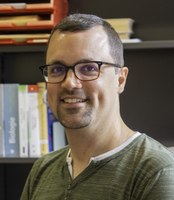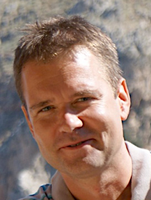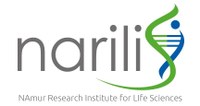Henri-François Renard
Presentation

After studying bioengineering (UCLouvain, 2005), Henri-François Renard became interested in membrane biology and membrane traffic in yeast during a PhD thesis as FNRS Research Fellow in the lab of Prof Pierre Morsomme at the LIBST, UCLouvain. In 2011, he moved to Paris for a first postdoctoral stay at the Institut Curie, in the lab of Dr Ludger Johannes, where he obtained a fellowship from the Fondation ARC. There, he began to work on unconventional mechanisms of endocytosis in mammalian cells and fell in love with this fascinating research topic. In 2015, back in Belgium in his PhD thesis lab thanks to a FNRS postdoctoral fellowship, he undertook a second postdoctoral stay during which he could develop new projects in line with his previous work in Paris. In 2020, he obtained an Assistant Professor position in the Department of Biology-Faculty of Sciences at UNamur, where he is currently building his lab. Since then, he has obtained a Start-Up Grant from Francqui Foundation and an Incentive Grant for Scientific Research (MIS) from FNRS.
His team explores the fundamental mechanisms that govern the dynamic remodeling of cell membranes, in particular during endocytosis. His main objective is to molecularly characterize new unconventional endocytic mechanisms (i.e. clathrin-independent) in mammalian cells, and to decipher their functions under pathophysiological conditions, such as cancer. In this context, he is particularly interested in the role of BAR (Bin/Amphiphysin/Rvs) domain proteins, which are key players in the detection/induction of membrane curvature. To carry out this work, his team makes intensive use of various cutting-edge microscopy approaches, which he is currently implementing at UNamur.
Contact : Henri-François Renard
Research
BAR domain proteins in endocytosis: a missing link between membrane curvature, cargo sorting and signaling?
|
Endocytosis is an essential process requiring orchestrated plasma membrane deformation for the uptake of nutrients from the surrounding cellular environment and turnover of plasma membrane components.
The discovery of clathrin-independent endocytic mechanisms led to the most challenging questions in the field: How are cargoes sorted in the absence of a clathrin coat and clathrin adaptor complexes? What are the proteins or complexes that link membrane curvature to cargo sorting? |
My working hypothesis is that the cytosolic membrane curvature sensors/inducers BAR (Bin/Amphiphysin/Rvs) domain-containing proteins 1°) play a functional role in endocytosis by connecting sensing/generation of membrane curvature to cargo sorting, particularly in clathrin-independent routes where there is no clathrin nor clathrin adaptors to fulfill these functions, and 2°) play a pivotal mechanotransductional role as ‘signaling hubs’ connecting plasma membrane geometry and cargo selection to actin cytoskeleton remodeling, signaling pathways regulation, and gene expression modulation.
To unravel the functions of BAR domain proteins, the project aims to combine advanced cell biology tools, various cutting-edge microscopy techniques, proteomics, and innovative biophysical approaches using model membranes and atomic force microscopy combined with fluorescence imaging on live cells. I am convinced that results from the proposed experiments will significantly help to understand the functions of BAR domain proteins in endocytosis, and particularly
- how BAR proteins are recruited to curved plasma membrane in a physiological context,
- how they participate in cargo selection and specificity, and
- how they mediate downstream cellular effects in response to the membrane curvature cues. These data are highly relevant in a physiopathological context, as dysfunctions in some BAR domain proteins and endocytic mechanisms have been involved in genetic and neurodegenerative disorders, or cancers.
This research is carried out by the DoME team (Dynamics of Membranes & Endocytosis).
The abstract is also available in French here...
His mentor - Dr Ludger Johannes - Institut Curie - Paris
 Meeting Dr Ludger Johannes changed the course of my scientific life. He has been a great source of scientific inspiration for me.
Meeting Dr Ludger Johannes changed the course of my scientific life. He has been a great source of scientific inspiration for me.
If I had to mention a few game-changing elements on which he opened my eyes, I would say:
- the way to address a biological question: in a broad and inclusive manner, always thinking about the next step, always aiming higher, and by collaborating with the right other researchers with complementary expertise;
- the interdisciplinarity: it is key for a research of excellence. He never hesitates to place around the table biologists, chemists, physicists... and to combine the most advanced technological approaches (microscopy, in vivo/in vitro, etc);
- the scientific writing: on this aspect, I always found his writing abilities breath-taking! When I start writing a new project or paper, I always ask to myself "how would Ludger write this or that?".













